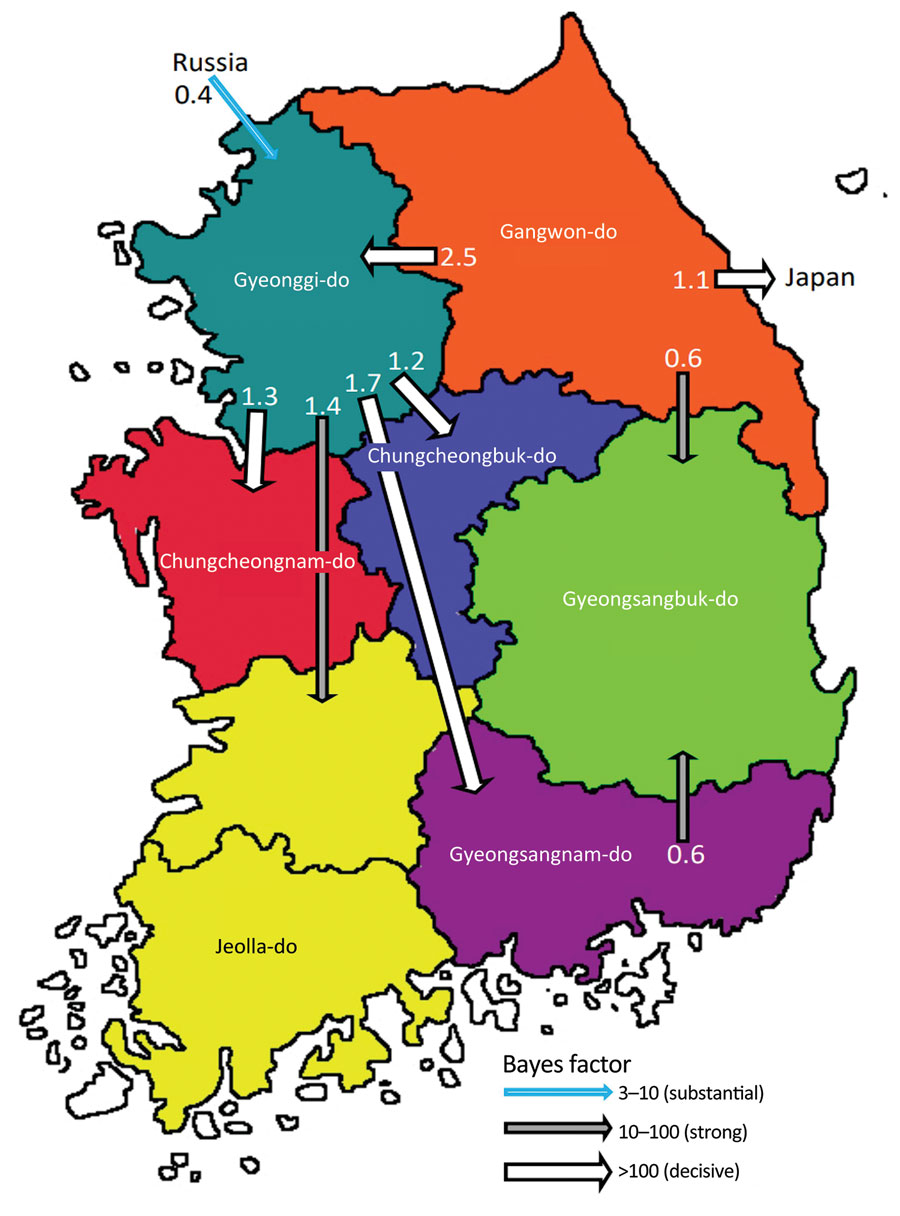Volume 30, Number 2—February 2024
Research
Evolution and Spread of Highly Pathogenic Avian Influenza A(H5N1) Clade 2.3.4.4b Virus in Wild Birds, South Korea, 2022–2023
Figure 5

Figure 5. Inferred transmission networks of highly pathogenic avian influenza A(H5N1) viruses from wild birds, South Korea, October 2022–March 2023. Arrows show the well-supported transitions in discrete trait phylogeography. Line colors indicate the overall Bayes factor test support for epidemiologic linkage. White arrows indicate statistical support with Bayes factor > 100 (very strong support), gray arrows indicate support with 10 < Bayes factor < 100 (strong support), and cyan arrows indicate support with 3 < Bayes factor < 10. Numbers next to arrows indicate transition rates.
1These first authors contributed equally to this article.
Page created: December 19, 2023
Page updated: January 24, 2024
Page reviewed: January 24, 2024
The conclusions, findings, and opinions expressed by authors contributing to this journal do not necessarily reflect the official position of the U.S. Department of Health and Human Services, the Public Health Service, the Centers for Disease Control and Prevention, or the authors' affiliated institutions. Use of trade names is for identification only and does not imply endorsement by any of the groups named above.